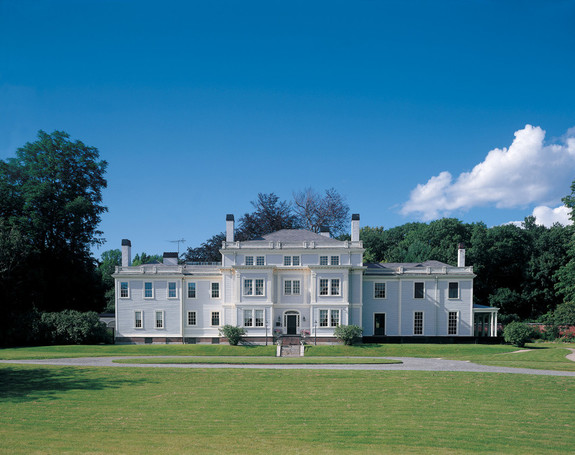Lyman Estate and Greenhouses

Lyman Estate, also known as "The Vale," is one of the finest examples in the United States of a country estate following the principles of eighteenth-century English naturalistic design. Also located on the property are historic greenhouses open year-round. Visit https://www.historicnewengland.org/property/lyman-estate-greenhouses/ for hours and information.
In the eighteenth and nineteenth centuries, large expanses of land and proximity to Boston made Waltham a popular location for country estates. Lyman Estate was the warm-weather retreat for four generations of the Lyman family. In 1793 shipping merchant Theodore Lyman commissioned famed architect Samuel McIntire to design and build a Federal-style house. The family enlarged the house in 1882 in the Victorian style and then remodeled it in the Colonial Revival style in 1917. The thirty-seven-acre property includes beautifully preserved gardens and historic greenhouses.

Visitors hear the story of the Lyman family as they explore the elegant mansion, which is used today as a venue for weddings, meetings, and private parties. The mansion’s architectural features include an elegant ballroom and graceful oval parlor, both pristine examples of Federal design. The Lyman Estate Greenhouses are open for casual or guided tours.
Open for mansion tours
Third Saturdays, year round*
Tours on the hour. Last tour at noon.
Closed most major holidays.
The Lyman Estate is a Historic New England property.
Top photo: The Lyman Estate, “The Vale” - The mansion was built in 1793 by wealthy Boston shipping merchant Theodore Lyman. It was used as a summer retreat for his family, who lived on Boston’s Beacon Hill the rest of the year.
Bottom photo: Ballroom - True to its original design of 1793, the ballroom is an elegant example of Federal period architecture with its emphasis on balance and symmetry. The ceiling frieze with its Pompeiian designs and the fluted columns are typical of the classical elements found in McIntire’s work. The exquisite fireplace mantel was carved in Italy of native marble. The large windows reflect the architect’s interest in using natural light and landscaped vistas to enhance the interior spaces.